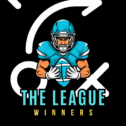To Infinity, and Beyond
Prior to this spring, I had played fantasy football redraft for 27 years and DFS for almost ten. After a living donor kidney transplant on August 11th, I began writing three redraft articles per week, as well as co-hosting a weekly DFS pod called “Cash Crusade”.
For fantasy football players (as well as contributors), it is important that we continue to grow and learn new information and experience the many different types of formats that fantasy football has to offer. As a frequent Twitter user, I kept seeing tweets and trade polls about “Dynasty Football”, but simply had no idea what they were referring to. With my interest piqued, I set off to do a Google search and find out what Dynasty was all about.
After doing my research, I found out that Dynasty was the closest thing to owning your own NFL franchise. Unlike Redraft, where you draft a new team at the beginning of each season, the Dynasty format allows you to roster players for multiple seasons, and even maintain a player for his entire career (unless you decide to trade him). Opportunities exist to either take over an existing franchise or start your own franchise from the ground floor.
If a Dynasty owner starts his own team, the initial allocation of players starts in a “startup draft”. The draft process is similar to a Redraft league, except that it involves draft picks for future seasons (typically three seasons or more in the future). These picks can be traded to acquire players from another franchise and/or change draft positions in your ongoing draft.
In addition, if the startup draft is held before the NFL draft in April, a separate “rookie draft” is held after the NFL Draft to allow owners to add these rookies to their existing roster of veterans. If the startup draft is held after the NFL Draft, the upcoming rookies will simply be drafted with the veterans, much like a Redraft league.
From Dynasty to Devy
So the question that has to be answered now is “What is a Devy League”? As I started dipping my toe into Dynasty waters (slowly at first), I began seeing the term Devy mentioned. Once again, I simply had no idea what it meant and started asking questions and doing more research.
I would come to find out that Devy is adding college (and some times high school) players to your roster. Each of these players must not be draft eligible to be part of the Devy pool. As an example, Trevor Lawrence (drafted in April) was part of the rookie draft and Spencer Rattler (quarterback at Oklahoma) is part of the Devy pool.
In addition to the rookie draft, leagues have an additional Devy draft which is held after the NFL draft. These players can be maintained on your roster through their particular draft class and on, into their NFL careers.
Maintaining these players will limit the number of players that are available in the following year’s rookie draft. Of course, this means that the largest rookie draft will be the first year of the league. The number of rounds for both the rookie and Devy drafts will vary from league to league, but my leagues have been four rounds for rookies and three rounds for Devy. In those leagues, the rookie draft next year will be three rounds.
Unlike my experience with Dynasty and Devy where I did my own research, my fellow staff and I will be writing content and answering your questions to make the transition much easier and enjoyable. This article is a preview of an ongoing series that will dig deeper into the basics of building your own Devy franchise.
Upcoming topics that’ll be included we want you to keep an eye out for:
- The best way to join a Devy league and provide platforms that support them
- Ways to familiarize yourself with the best players in both the upcoming rookie and Devy draft classes
- Tools for roster construction
- Trade values for both the rookie and Devy classes vs the values of veterans
In reality, there is a ton of content to consume and I will break this down to more digestible segments in the upcoming articles.
Discover more from The League Winners
Subscribe to get the latest posts sent to your email.

